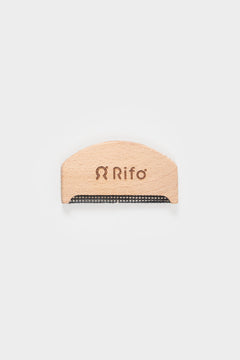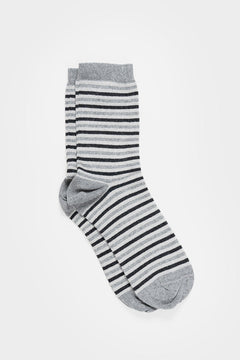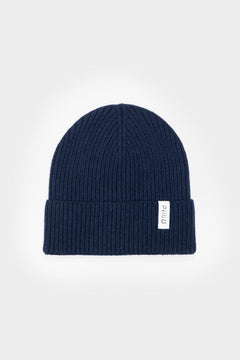Since we launched our recycled silk knitwear capsule collection, we have received many feedbacks and observations on this circular fibre of animal origin.
Many have wondered whether silk, as a recycled material, which originates from virgin fibers that have required the sacrifice and/or exploitation of animals, could really be considered cruelty free or vegan?
The most radical ones oppose these recycled fibers, arguing that they still require the consumption of virgin material, thus indirectly stimulating their production.

Thus, as we did for recycled wool and cashmere, we asked for the opinion of an advocate for this philosophy.
This time around, we decided to delve into the subject of vegan silk with Cristina Cotorobai, a vegan eco-influencer, who is better known on Instagram as Cotoncri and who has been dealing with these issues for years.
First of all, however, some background on silk production is necessary:
Where and how virgin silk is produced
Where: Silk was once produced in Italy too, particularly in the Como area. From the post-war period until the 1970s, a process of centralisation of silk production in Asia began. As of today, approximately 60% of world production takes place in China, 26% in India and around 2% in Uzbekistan

How: Silk is made from a very strong keratin filament, produced by the larvae of a butterfly. The most common one, producing one of the best kinds of silk, is the Mori Bombyx, which is bred and fed with mulberry leaves, providing the typical lustre to the fabric.
The traditional process of silk production is as far from cruelty-free as it gets. It requires the cocoons to be harvested before hatching and the insects to be killed by stewing at high temperatures. The cocoon is then boiled in order to separate the gummy part and easily extract the filaments of the fibre, the so-called continuous filaments.

Is there such a thing as cruelty-free virgin silk?
It is not necessary to sacrifice worms in the cocoon to produce silk, yet it is definitely simpler from a procedural point of view. So the answer is yes, there is indeed a cruelty-free version of virgin silk. In such cases, the larva is allowed to complete its transformation into a butterfly and emerge from the cocoon. The silk filaments from the damaged cocoon, rather than having a very long continuous filament, have an interrupted filament. As a result, it is necessary to recover the various fragments and spin them together. This is a more laborious process that produces a less lustrous yarn and is therefore not very popular with silk manufacturers.
Examples of cruelty-free silk are Ahimsa silk (which translates from Indian as 'not to hurt'), produced from damaged cocoons, and sometimes Tussah silk, a wild-breeding silkworm that feeds on oak leaves instead of mulberry, making the fabric look rougher.
Cruelty-free silk coincides in many cases with organic silk, produced without using fertilisers or chemicals and leaving the insects free to carry out their life cycle.

How recycled silk is produced
In order to produce a silk clothing alternative that could be sustainable both from an environmental and animal point of view, we chose recycled silk from industrial waste.
In this case, only the yarn waste that has undergone little twisting and is therefore less compact is recovered, making it easier to recycle through the carding process.
Recycled silk is made from the waste from spinning Mulberry raw silk, a type of silk produced by boiling silkworms to extract the filament.

At this point you may be wondering why we made this choice. Wasn't there a completely cruelty-free kind of silk?
Unfortunately not. As we always say, being a sustainable fashion brand is like being a tightrope walker, and it's always about looking for the best compromise between ethics and the market. In the massive silk production industry, ethical and vegan processes are rare to encounter. The vast majority of companies choose the process of boiling the cocoons, which makes it very difficult to find recyclable and cruelty-free silk at the source.
This controversial aspect gave rise to all the doubts this material has generated in our team and community, for example:
Can recycled silk be considered cruelty-free?
Considering that this material was produced by the involvement of animal exploitation, is it acceptable to reuse its waste?
We therefore decided to directly leave the word to someone who has chosen to follow the vegan philosophy and discusses such issues with her community everyday. Here’s what we asked to out eco-influencer friend Cotoncri, who is super active in raising awareness for this lifestyle and for the impact of fashion on the planet.

Do you consider recycled textile fibers in line with your vegan philosophy even if their origin is animal? If so, why?
Everything that is produced with no animal exploitation and with low environmental impact production methods is part of my personal vegan philosophy. I believe in the importance of fibers recycling, given the enormous impact of waste caused by the textile industry. This practice does not only recover a noble material which, if wasted, would have made the suffering of animals completely pointless, but also allows the creation of garments that will last over time, encouraging responsible consumption.
Do you think there is a common line of thought in the vegan world on this subject? Do you know any vegan people who wouldn’t accept silk, even if recycled?
The vegan philosophy is broad and elastic. Each person embraces it in his or her own unique way, which makes the daily choices different, yet all valid. What unites everyone, however, is the active desire to free animals from all forms of exploitation. Some do this by rejecting any practice that might even remind them of it, like wearing recycled wool. Others, like me, embrace a less restrictive approach. However, I never fail to specify, when someone shows interest in what I wear, that the fibers in my garments are recycled and therefore cruelty free, or vintage! Good influence is essential.
The production of virgin silk requires the killing of silkworms, which are boiled alive in order to extract the filaments from the cocoon. Do you think there is any difference for a vegan between silk and virgin wool, which does not involve killing sheep?
Absolutely not. Just as there is no difference between eating chicken meat and the egg it has produced under the same exploitative conditions. It is not just death that makes a product immoral and unethical, but every moment of existence imbued with suffering and subjugation.

What do you think of synthetic materials as a clothing alternative in line with vegan principles?
Over time I have become convinced that not everything avoiding animal exploitation is actually harmless to the animals themselves. Synthetic materials are by far the most widespread in the textile industry. According to a study by the Ellen MacArthur Foundation, synthetic clothing dumps half a million tonnes of microplastics into the oceans every year, which is comparable to about 50 billion plastic bottles. It is clear that this affects animal welfare, especially when it comes to endangered species. Thus, until plant-based alternatives are available and/or more readily available, I am convinced to support the practice of regenerating animal fibers.
Conclusions
We firmly believe that constructive dialogue is something that always generates new ideas. That's why we feel that the debate on recycled silk that emerged after the launch of our new garments could be a small step forward in raising awareness of sustainable and vegan fashion, regardless of one's position.
Special thanks to Cristina who enriched this article with her personal point of view on the subject of vegan philosophy & recycled fibers of animal origin.
Did you find it interesting? Would you like to share other ideas or add anything? Write it down in the comments.








